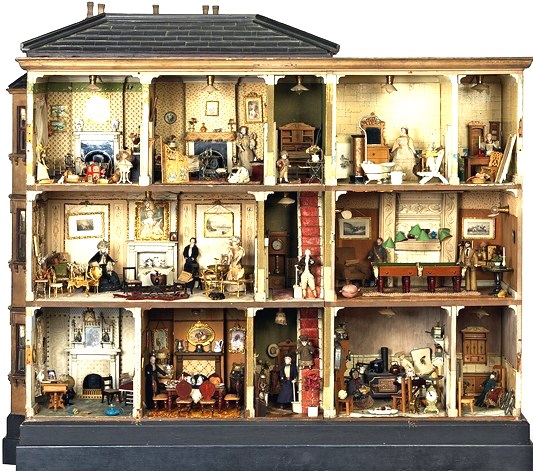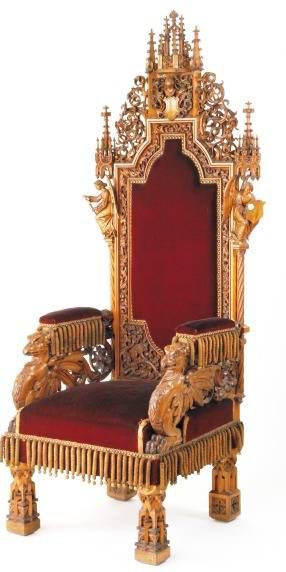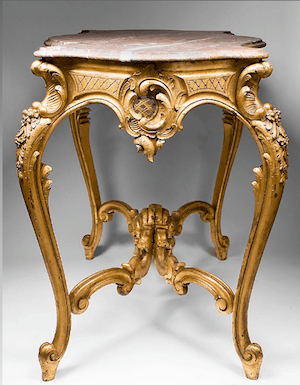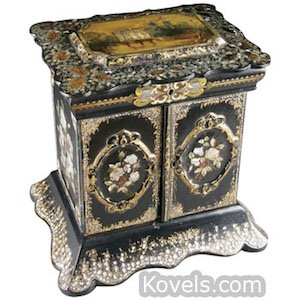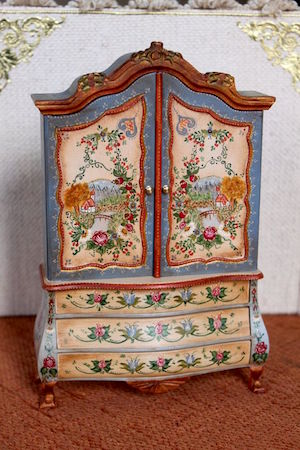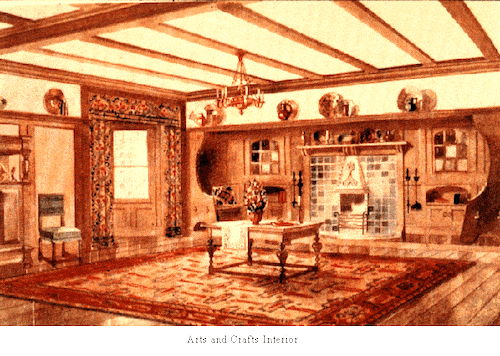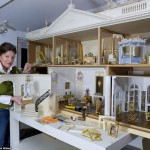Early Victorian Furniture
Queen Victoria’s reign over the British Empire lasted sixty-four years (1837-1901). Many styles of furniture rose and fell in popularity in that time. Combined, they have earned the generic classification – Victorian. There is one common thread, however. Victoria loved ornate styles. Generally, think of cluttered rooms, full of heavy furniture, and surrounded by plants, bulky fabrics and lots of china and glassware. The later Victorian era saw a modest lessening of overcrowded rooms until her son Albert (Bertie) succeeded to the throne as Edward VII and extravagance became the decorating principle.
A Middle-Class Market
The Industrial Revolution was in full swing. It had produced a vibrant and still-growing middle class that wanted as much, or more, than the gentry. Around 1835, the smooth and relatively simple Grecian style of Regency furniture went out of favor. It was mostly replaced by more imposing, rounded furniture, with ample ornament, decoration.
Two Revivals – Gothic and Rococo
In the first part of Victoria’s reign, many design styles were simply elaborations of earlier ones with increased emphasis placed on surface decoration. As the period progressed, designs were viewed more critically; interest shifted away from decoration towards structure and form.
No single style emerged as dominant in the homes of the early Victorians. Furniture designers and manufacturers copied a multitude of styles. Gothic, Tudor, Elizabethan, Renaissance, English Rococo, and Neo-Classical battling it out for prominence. The Gothic Revival style was probably the most “important” in furniture history, while the exuberant Rococo revival may have taken the honors in popularity.
Gothic Revival, 1840-1860: This is one of the few styles that celebrates elements found in architectural themes: turrets, pointed arches and quatrefoils (four partially-overlapping circles of the same diameter) – designs found in 12th through 16th centuries, and used in Gothic Revival furniture. The shelving form known as an étagère was born, allowing Victorians to have more room to display their treasured collections. Furniture that had mechanical parts was also embraced by the Victorians.
Rococo Revival, 1845-1870: This design style features the use of scrolls, either in a “C” shape or the more fluid “S” shape. Carved decoration in the form of scallop shells, leaves and flowers, particularly roses, and acanthus further add to the ornamentation of this style of furniture. Legs and feet of this form are scrolling or cabriole (a narrow leg that curves outward ending in an ornamental foot ). The use of marble for table tops was quite popular, with corners shaped in the scrolling form. Some cast-iron elements can be found, especially if it was cast as scrolls.
Materials
Mahogany and rosewood were the woods of choice with oak making something of a nationalist come back from the depths of time, admired for its Englishness. Iron also made its appearance in the early Victorian age particularly in Victorian bedroom furniture. And of course, controversial papier mache, which was celebrated for its sturdiness. Manufacturers still thought it prudent to build the seating furniture around a wooden frame.
Features of Victorian Furniture
Cumbersome furniture, dust-catching carving.
Buttoned upholstery – armchairs frequently with low arms scrolled at the front.
Balloon-back chairs and spoon back.
Steam bent chair.
Ladies easy chairs without arms because of the vastness of skirts.
Chesterfield – fat layer of well-sprung upholstery named after the Earl of Chesterfield.
Papier Mache chair. Boxes and trays but applied over a wooden frame for chairs.
Ottomans used in rooms which had bow windows or round ends and picture galleries.
Smokers bow for houses, barbers shop, cottages, and offices.
Work table for games and sewing, reflecting Louis XIV style.
Davenport – ladies writing desk.
Chest of drawers with wooden knobs – more to do with cheapness.
Chiffoniers used in dining and sitting rooms.
Lootable named after the fashionable card game.
Whatnots suited over-furnished rooms.
Sutherland table – a cross between a gate leg and Pembroke table very narrow, failing in proportion.
Gothic Revival sideboard.
Telescopic table – strong, steady table with bulbous turning. Solved the problem of leg room.
Sideboards contained mirrored back piece, mass produced in 1840.
Military desk – designed in three parts for traveling, sunken handles.
Brass bedstead – four poster with curtains started to disappear.
Early Victorian Furniture Decline
Around the middle of the nineteenth century, the demands of a mass market, with its concerns of economy, led a decline in design and construction standards of domestic furniture. Showy ornamentation and veneer attempted to conceal the lack of quality craftsmanship.
The London Times put it this way, in a critique of the furniture at the Great Exposition of 1851. “It seems to us that the art manufacturers of the whole of Europe are thoroughly demoralized” Other comments were “the exhibit shows furniture at its most extravagant and flamboyant and somewhat cut off from reality.”
All Is Not Lost
A revolution in design and craftsmanship was on the way. William Morris and John Ruskin would inspire the Arts and Crafts Movement, their reaction against the machine age when the Late Victorian era would begin. But first, we have to get through the Mid-Victorian period.
Susan Downing, with Patrick Owens


